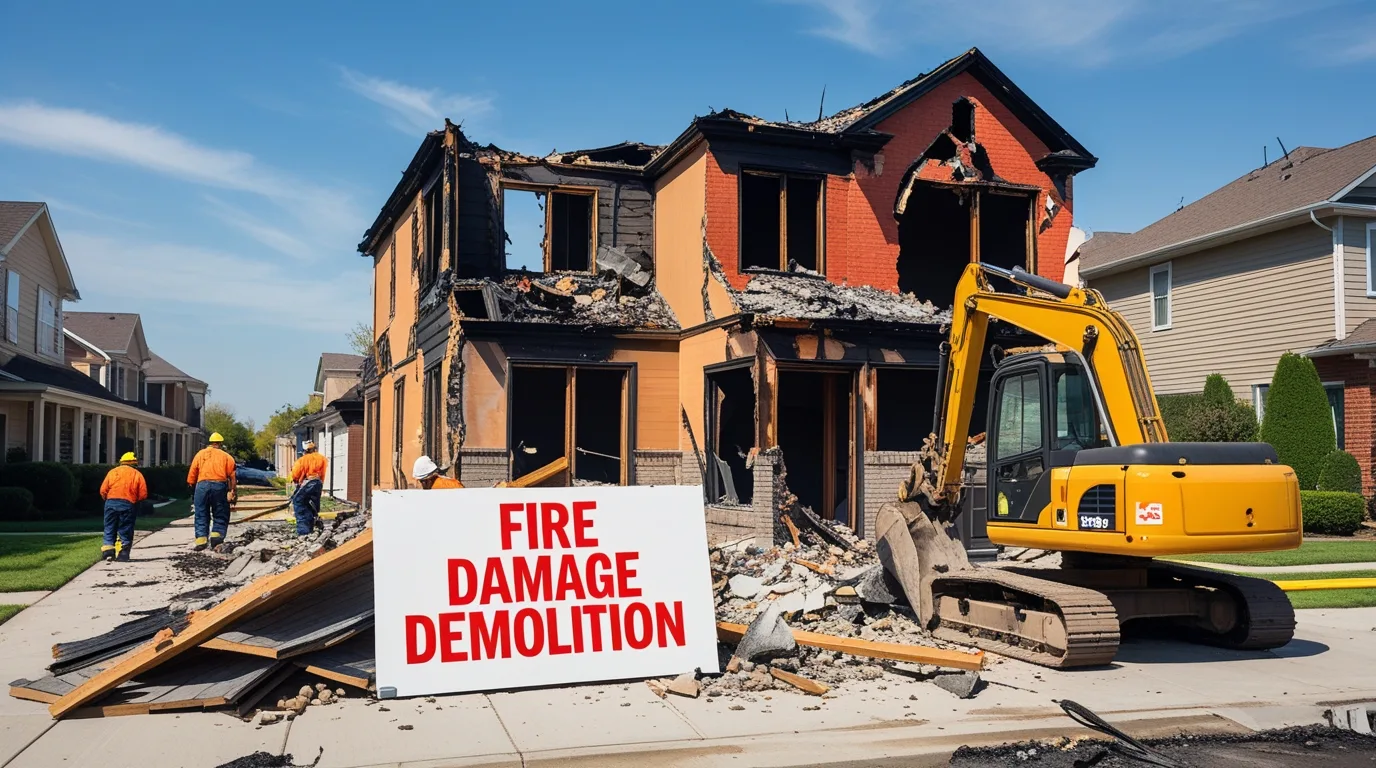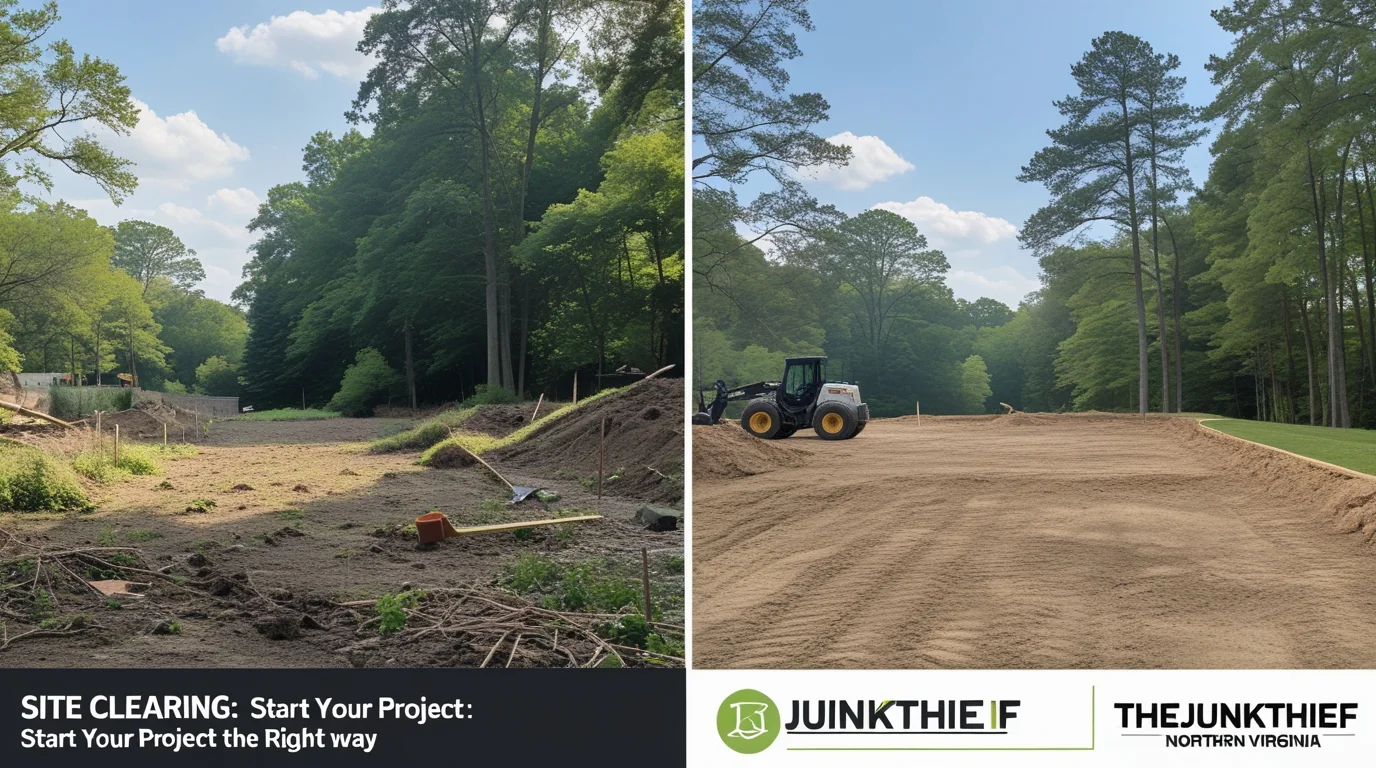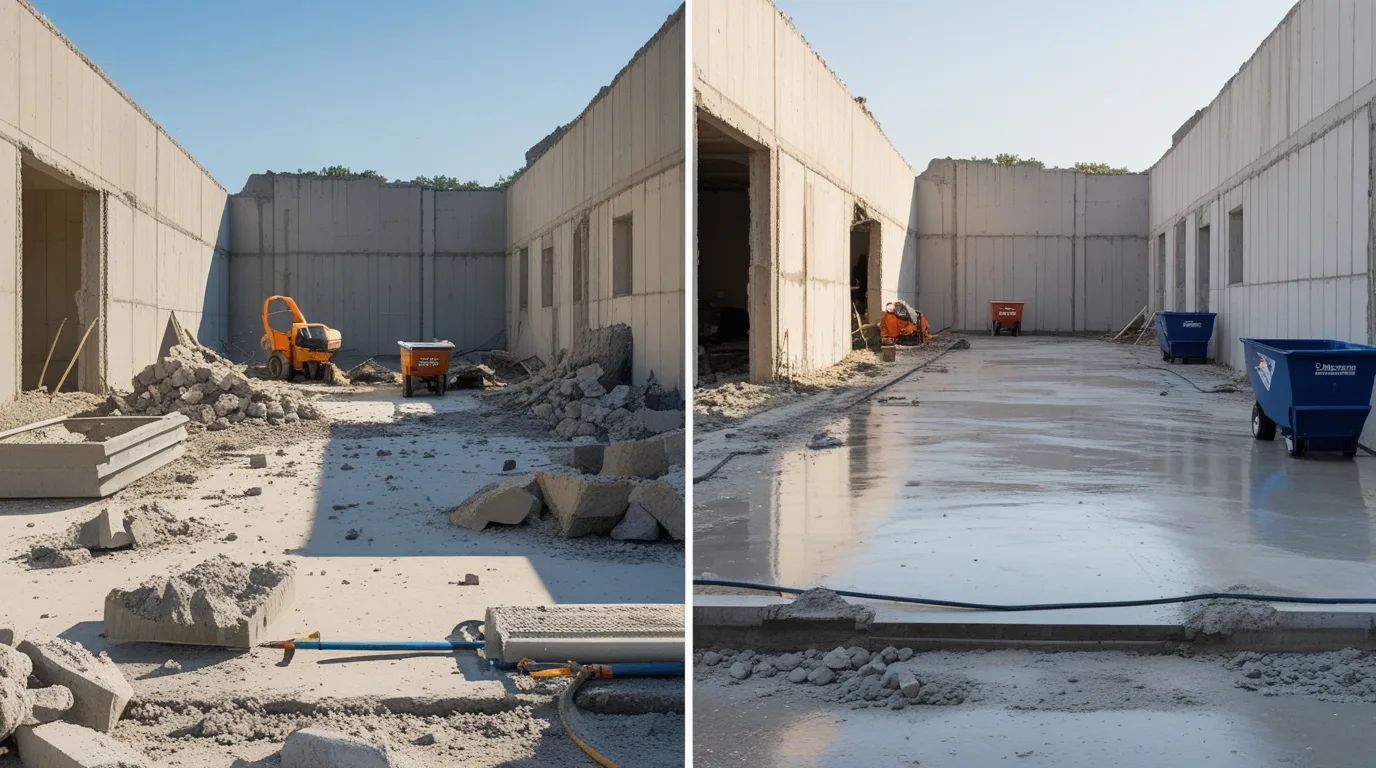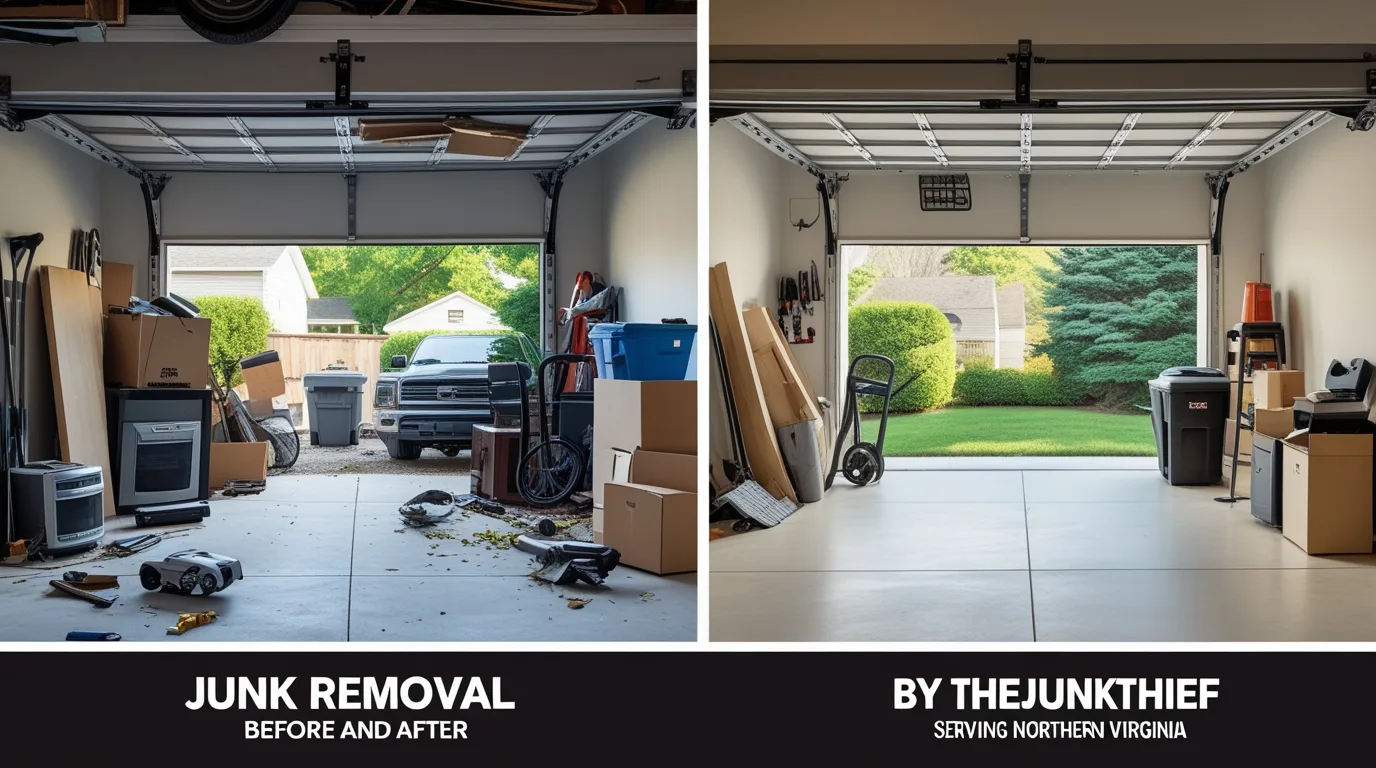When Fire Strikes: The Hidden Toll Beyond the Flames
When a fire hits a home, the damage goes deeper than just what we can see. Burned walls, collapsed ceilings, and smoke stains are only part of the problem. Heat can weaken the structure, smoke can soak into insulation, and water from firefighting can lead to mold. In many cases, parts of the building become unsafe to repair and must be removed completely. This is where fire damage demolition plays a key role; it clears out dangerous areas so the property can be safely restored from the ground up.
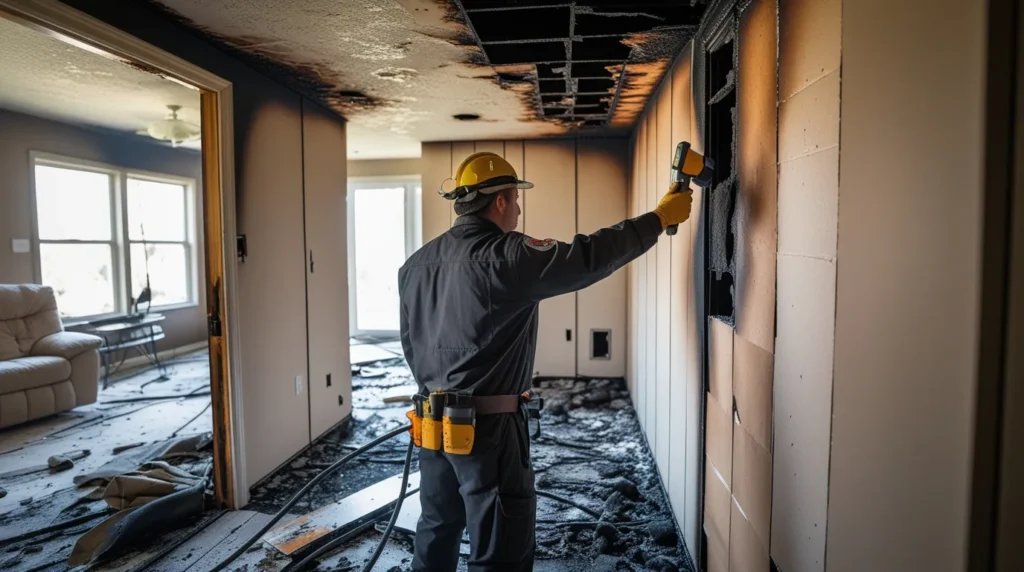
Why Fire Damage Cleanup Is More Than Just Debris Removal
Cleaning up after a fire isn’t as simple as throwing out burned things. Fire damage cleanup means checking everything that’s safe to keep and what needs to go. It includes fire damage removal, smoke odor removal, and clearing out parts of the home that might fall apart later. Sometimes, walls or floors look fine but are too damaged underneath. Professionals use tools to check moisture and heat damage inside materials. Fire remediation contractors know how to spot danger that the eye can’t see. Without this careful process, the home can still be unsafe even after it looks clean.
The Role of Demolition in the Fire Damage Restoration Process
Before a house can be rebuilt, the damaged parts must be torn down. That’s where fire damage demolition fits in. It’s the first major step in the fire damage restoration process. During this stage, workers remove broken beams, warped drywall, and weakened roofing. Everything is taken apart in a way that protects what’s still good. Not every fire needs full demolition, but when the damage is deep, it’s the safest path forward.
Proper demolition makes it easier for fire restoration contractors to rebuild. It clears space, removes hazards, and gives a clean slate for the repair crew.

Fire Damage Assessment: What Professionals Look For
Before any walls come down, professionals do a fire damage assessment. They look at the structure’s safety and test for smoke, soot, and water damage. These inspections help decide whether demolition is needed, and how much.
Experts check:
- If the roof is sagging or burned
- If smoke got into vents or insulation
- If water caused mold behind walls
- If the structure can hold weight safely
Fire damage repair experts use tools like thermal cameras and moisture meters. These show what can’t be seen with the eyes. If damage is too great, they recommend demolition for safety.
When Is Demolition Necessary After a Fire?
Not every fire needs full demolition. But it’s often needed when:
- The home’s frame is badly burned
- Mold has spread from the water used during firefighting
- Smoke has soaked into hard-to-clean areas
- Roofs or floors are near collapse
In these cases, demolition keeps workers and future homeowners safe. It also speeds up the recovery process. Trying to clean or fix unsafe structures costs more time and money later.
Repairing fire-damaged homes is hard if the base isn’t safe. That’s why choosing demolition early can be the smarter, safer route.
Step-by-Step: The Fire Remediation and Demolition Process
Here’s how the fire remediation process usually works when demolition is needed:
- Safety Check: Power and gas are turned off. Unsafe areas are blocked off.
- Assessment: Experts inspect the full site and make a demolition plan.
- Salvage: Personal items and reusable materials are removed and stored.
- Demolition Begins: Crews remove walls, ceilings, floors, or roofing that can’t be saved.
- Debris Sorting: Hazardous and non-hazardous waste is separated.
- Site Prep: The cleaned area is prepared for the next phase of repairs or rebuild.
This is often called a fire restoration checklist, and following it helps avoid delays or safety problems.
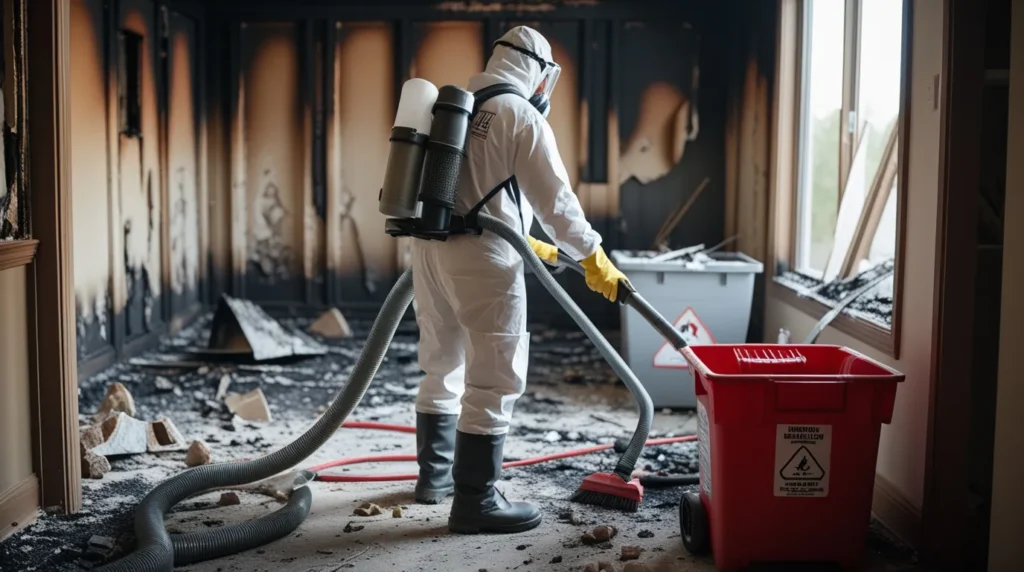
Safety First: Handling Hazardous Debris After Fire Damage
Demolition after a fire comes with hidden dangers. Smoke, soot, and burned materials can be harmful. Some homes may even have asbestos or lead-based paint. That’s why emergency fire damage cleanup must be done with care. Protective gear is a must. Crews wear masks, gloves, and suits. They also use special vacuums and tools to keep dangerous dust from spreading.
The goal is to make the space safe not just for workers, but also for anyone who’ll live there in the future. Fire demolition isn’t just about knocking down walls. It’s about doing it the right way.
Post-Fire Exterior Cleanup and Property Prep
The outside of the home also takes a hit in a fire. Post-fire exterior clean-up involves clearing:
- Burned siding or brick
- Damaged gutters and roofing
- Melted outdoor pipes or wiring
- Broken windows or doors
These parts must be removed before repairs start. Sometimes, roof repair after a fire needs urgent attention to stop water leaks or falling pieces. After exterior cleanup, the site is secured. Crews make sure rain, wind, or animals don’t get inside. Then the property is ready for rebuilding.
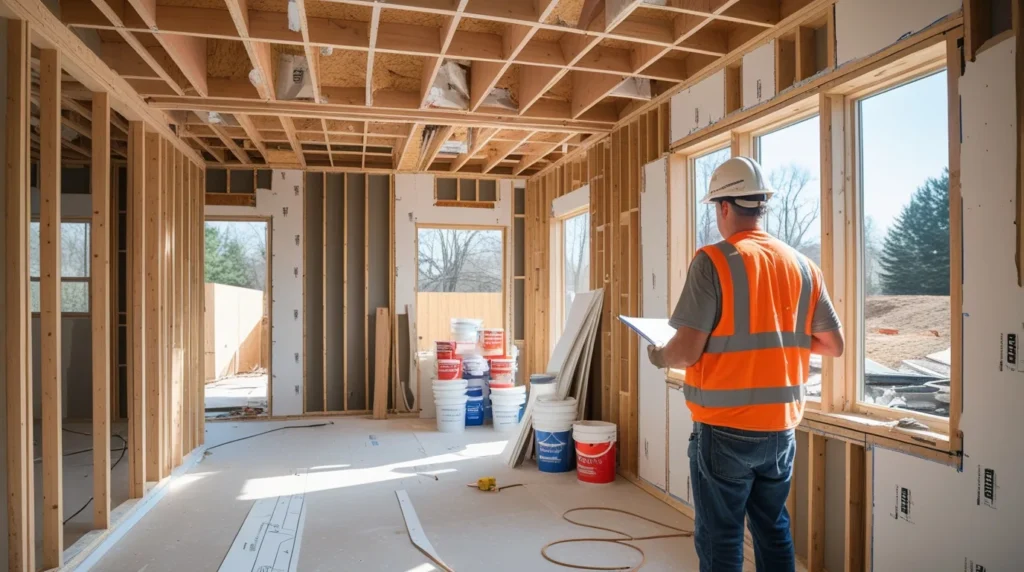
From Ruin to Rebuild: Transitioning to Fire Damage Repair
Once demolition is finished and the site is safe, it’s time for repair. Fire damage repair contractors step in with a new plan. They start with framing and roofing, then electrical, plumbing, and walls.
This is where hope returns. You begin to see the home take shape again. Rebuilding may include:
- Drywall installation
- New floors
- Fresh paint
- Safe, updated wiring and plumbing
For commercial properties, commercial fire damage repair might also mean code upgrades and redesigns. For homes, it often leads to a fresh start. Fire damage reconstruction is the final stretch, guided by experts every step of the way.
Serving Northern Virginia with Trusted Demolition and Restoration Support
In Northern Virginia, homeowners often call on trusted teams like The Junk Thief for fire cleanup and demolition. We understand the urgency of recovering after fire damage. That’s why we respond fast, work clean, and follow every safety rule. Whether it’s a small fire in one room or a large loss throughout the home, our team handles the entire process, from fire damage cleanup to final preparation before repair begins.
When the worst happens, you don’t need to face it alone. Our experience in residential fire damage restoration and demolition brings peace of mind and a faster path to recovery.
Final Thoughts: Why Professional Demolition Is Key After a Fire
Choosing to hire pros for fire damage demolition can save time, money, and stress. Trained teams know how to handle unsafe materials, keep the area secure, and make smart choices about what to tear down or keep. DIY demolition might seem cheaper, but it often leads to mistakes, missed hazards, or injury. That’s why fire restoration and construction services are so valuable. They get it done right, safely, and on time. The Junk Thief stands ready to help families get back on their feet. From the first spark to the final repair, we’re here to guide, clean, and support the path forward.
If you’re facing damage from a recent fire, don’t wait. Let our expert team at The Junk Thief handle the cleanup and demolition so you can focus on rebuilding what matters most.

